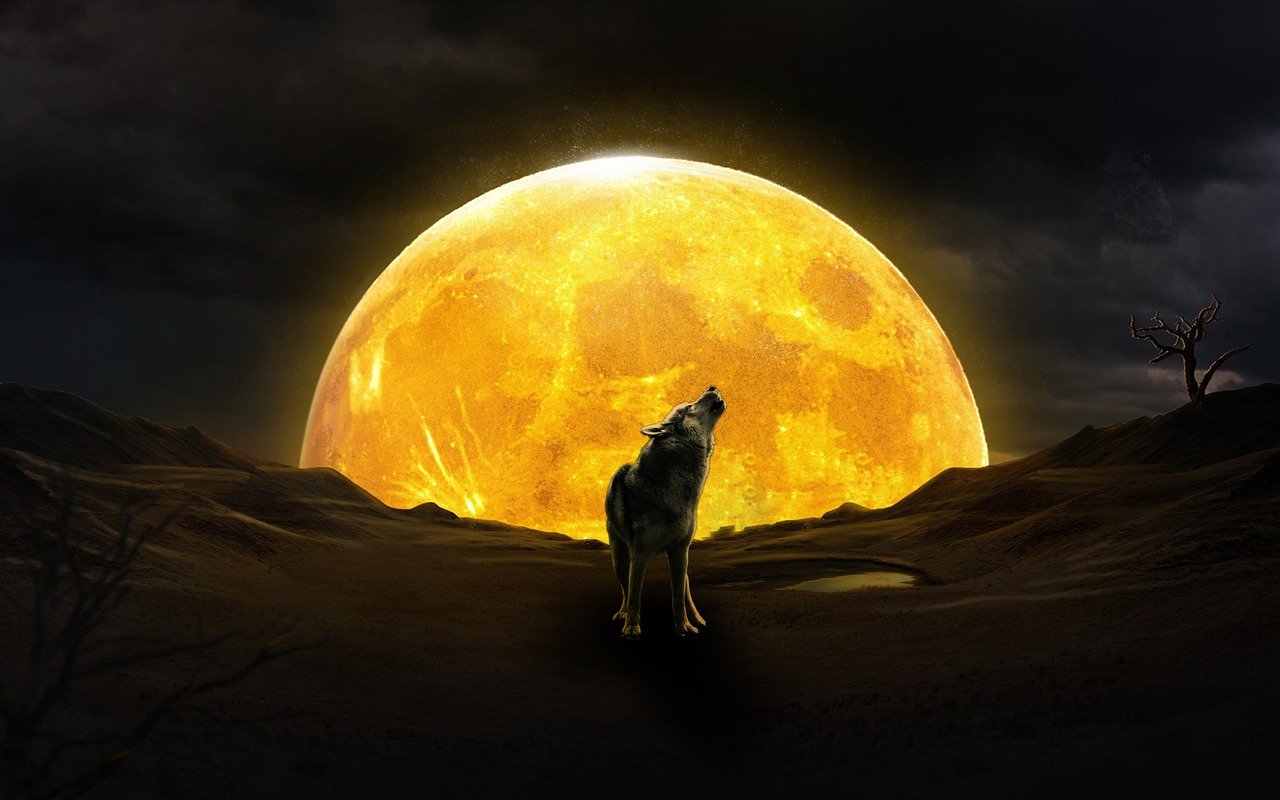The wondrous things that can be found in space have always been a source of amazement and curiosity for humans. The astronomical phenomena known as the “Wolf Moon” is one of the most fascinating celestial events that can occur. The Wolf Moon is a topic that has piqued the interest of people from all walks of life all over the world due to its wealth of folklore and the cultural weight it carries. In this post, we will investigate the core of the Wolf Moon, including its roots, the cultural significance of the Wolf Moon, and the most effective ways to see its regal presence.
Where Did the Term “Wolf Moon” Come From?
The phrase “Wolf Moon” originates from early colonial American culture as well as Native American culture. Native Americans used to name the full moons of North America based on the changing of the seasons as a way of marking time and keeping track of the cycles of nature. It is thought that the name “Wolf Moon” originates from the Algonquin tribes, who associated it with the howling of wolves during the cold and hard winter months. Wolf howling is reported to have occurred during this time. During this time period, wolves were extremely noisy as they looked for food and strengthened their packs; this contributed to the origin of the word we are familiar with today.
The Science That Supports the Existence of the Wolf Moon
The Wolf Moon is a natural astronomical phenomenon, despite the fact that it holds a romantic name and historical significance. At its heart, the Wolf Moon is just another moon. When the moon has reached its full phase and is seen as a perfect, bright disc in the night sky, this phenomenon is known as a “Wolf Moon.” When the moon is in a position where it is directly opposite the sun and the Earth is in between the two celestial bodies, this phenomenon occurs. On average, it occurs once every 29.5 days. The captivating appearance of a full moon is produced when sunlight penetrates the moon and shines directly on its surface, where it is reflected back to Earth.
The Impact That Different Moon Phases Have On Nature
Since ancient times, different superstitions and influences on the natural world have been linked to the full moon, including the Wolf Moon. According to urban legend, the full moon has an effect on human behavior, causing increased restlessness, insomnia, and even heightened madness (thus the word “lunatic,” which derives from “lunar”). Nevertheless, scientific research have not been successful in providing considerable data to support these statements.
However, one thing that cannot be refuted is the fact that the moon has an effect on the tides of the earth. The gravitational pull of the moon, in conjunction with the gravitational force of the sun, is responsible for the rise and fall of the tides. The combined gravitational pull of the moon and sun at full moon results in higher high tides, which are known as spring tides. This occurs because the moon and sun are aligned. Strong tides have the potential to have an effect on coastal ecosystems as well as the behavior of some marine creatures.
Celebrations and Other Events of Cultural Significance
In addition to the important role it plays in science, the Wolf Moon also plays an important role in the culture of many different nations. In many different civilizations, religious rites, ceremonies, and celebrations have historically been connected with the full moon, including the Wolf Moon. These ceremonies frequently illustrate a profound connection with the natural world and the cycle of the seasons.
In several Native American societies, the Wolf Moon was a time when people would get together and talk about their histories, as well as the myths and legends that they believed in. It was a sign of the cohesion and resiliency that was necessary to get through the difficult winter months. Ancient societies all across Europe saw the Wolf Moon as a time for coming together as a group and engaging in introspective activities.
How to Enjoy the Glorious Appearance of the Wolf Moon
It is not necessary to have much more than a clear sky and an unobstructed view of the moon in order to observe the Wolf Moon. A Wolf Moon, in contrast to a solar eclipse, a lunar eclipse, or other astronomical occurrences, can be safely observed with the unaided human eye, making it possible for anybody to witness it.
Get away from the bright lights of the city for the greatest possible experience. This will help lower the amount of light pollution and make the moon more visible. Discover a cozy area outside, preferably one that is elevated, in order to get the best possible view of the moon rising. If you want to get a better look at the craters and other characteristics of the moon, bring along a set of binoculars or a telescope.
Conclusion
People all over the world continue to be awestruck and fascinated by the enigma that is the Wolf Moon because it is a celestial phenomenon that is both mysterious and mesmerizing. It is a reminder of our profound connection with the natural world and the rhythms of the universe, and it has its origins not just in scientific reality but also in the mythology of other cultures. Therefore, the next time the Wolf Moon appears in the night sky, make sure to stop, admire its beauty, and think about the ancient myths and customs that have been entwined with its illuminating radiance for millennia.
![]()
